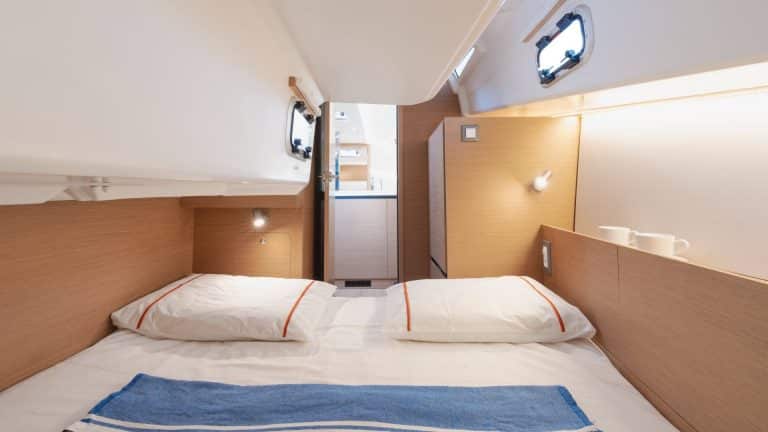In the vast blue horizon of the ocean, sailors venture into a world where identity, experience, and the right to engage in maritime activities are crucial. In this context, the Maritime Logbook emerges as an essential document, recognized and accepted internationally.
From the shortest journey to the most extensive odyssey at sea, the Maritime Logbook meticulously records each experience, providing a detailed traceability of each individual’s maritime activity. It is not just a document; it is a living testimony of professional trajectory, granting validity and support to every sailor in the various navigations they have undertaken.
Obtaining this document is a gateway to various areas within the maritime industry, granting recognition and authorization to perform specific roles aboard vessels. Spanish citizens with professional titles related to merchant marine or fishing, as well as those with maritime specialty certificates, have the opportunity to obtain the Maritime Logbook, allowing access to job opportunities and validating their experience in the nautical field.
This detailed guide from Motyvel will explore the steps, procedures, costs, and authorized navigation areas for those seeking to obtain this internationally recognized credential that validates experience and proficiency in the maritime world. Drawing from our experience of over 35 years, we provide all the information you need about obtaining your Maritime Logbook.
What is the Maritime Logbook?
The Maritime Logbook, known as ‘Cartilla de Embarque’ or DIM (Documento de Identidad del Marino), constitutes an essential document for sailors, recognized and accepted internationally.
This logbook not only serves as official identification and grants the right to engage in maritime activities but also acts as a record of the sailor’s boardings and landings. It provides precise traceability of each individual’s maritime experience and activity, being a vital element in the nautical industry to validate and support the professional trajectory of each member in various navigations they have undertaken.
These certificates enable work in various areas within the maritime industry, ensuring recognition and authorization to perform specific functions aboard vessels.
The acquisition of the Maritime Logbook is enabled for Spanish citizens holding professional titles related to merchant marine or fishing. Additionally, individuals with maritime specialty certificates also have the possibility of obtaining the Maritime Logbook.
Types of maritime registration logbooks
The Maritime Logbook is subdivided into two fundamental types. Both the Spanish Maritime Logbook and the Documento de Identidad del Marino (DIM) have their own characteristics, requirements, and specific procedures for obtaining them:
1. Spanish Maritime Logbook
Intended for those sailors working on vessels under the Spanish flag and for trips made between ports or areas under Spanish sovereignty. Requires Spanish citizenship and a professional title in merchant marine or fishing, or specific certificates of maritime specialty.
2. Documento de Identidad del Marino (DIM)
An official document resembling a small book, recording professional nautical titles, STCW certificates, and boardings carried out by the sailor. Suitable for Spanish citizens working on Spanish or foreign vessels, whether in international navigations, fishing activities, or maritime transportation with stops in international ports.
How to process the maritime logbook
The procedure for obtaining the Maritime Logbook involves a series of requirements, procedures, and specific details related to its acquisition, renewal, price, and the authorized navigation areas. Here is the development of that point following the provided outline:
1. Gather the necessary documents
It is crucial to ensure a smooth and successful process when applying for the Maritime Logbook. Additionally, it is advisable to check the specific requirements and current regulatory updates to ensure compliance with all necessary criteria before initiating the application process.
Documents certifying professional training in the maritime field
Such as the title of merchant marine or fishing. In the absence of these titles, a recognized certificate of maritime specialty can be submitted.
The Certificate of Basic Training in Maritime Safety
Is essential and must be approved by the Directorate General of Basic Training in Maritime Safety. This document attests that the applicant has successfully completed the basic training course in maritime safety, a fundamental requirement for obtaining the Maritime Logbook.
The National Identity Document (DNI) or Passport
In its original format must be presented, along with a certified copy of the same, to verify the applicant’s identity and confirm their nationality.
Two passport-sized photos of the applicant are required
On the back of each photo, the name and surnames of the applicant must be written in pencil.
A specific application for obtaining the Maritime Logbook must be completed
This application must be properly filled out with the personal data of the applicant and signed correctly, ensuring that all provided information is accurate and up-to-date.
Proper preparation of documents for the Maritime Logbook application is essential to ensure that everything is in order and meets the established requirements. Make sure that professional titles, training certificates, and identification documents (DNI or Passport) are up to date and have not expired. It is also important to review that the information on the documents is correct and matches the details provided in the application. Any discrepancies could delay the process.
Some organizations or institutions may require certified copies of the original documents. This involves obtaining copies officially verified by a notary public or an authorized entity certifying that they are faithful replicas of the original documents.
2. Submit the application
To obtain the Maritime Logbook, it is essential to approach an authorized entity. It is advisable to contact the relevant offices beforehand to obtain updated information about the process and the requirements for obtaining this document. These entities may include:
- Maritime captaincies. Local offices responsible for the administration and management of maritime affairs in different ports. They are strategically distributed along the coast and in certain areas designated for nautical activity. They are responsible for facilitating and supervising the issuance of the Maritime Logbook, as well as providing information and assistance related to maritime procedures.
- Central services of the Directorate General of Merchant Marine. In certain cases, depending on specific regulations or guidelines, procedures or inquiries related to the Maritime Logbook can be carried out in the central offices of the Directorate General of Merchant Marine.
Ensure that the documents are organized neatly and attached correctly to the application to avoid any inconvenience during the review process. When submitting the application and the required documents to the relevant Maritime Captaincies or Maritime Districts, it is crucial to follow the instructions provided by local authorities and be prepared to answer any additional queries that may arise during the application process.
3. Payment of fees
Paying fees is an essential step when applying for the Maritime Logbook. To meet this requirement, the corresponding payment must be made at the authorized bank for the procedure. It is vital to have the necessary funds available at the time of application and to make the payment of the corresponding fee. The cost of the Maritime Logbook may vary depending on the type of document requested:
- Spanish Maritime Logbook: This type of logbook, valid for navigations between ports or locations under Spanish sovereignty, generally has a maximum cost of around 2 euros. This price may vary depending on current legal provisions and policies established by the competent authorities.
- International Maritime Logbook: Designed for external navigations, i.e., trips to foreign ports outside areas under Spanish sovereignty. The cost to obtain this type of logbook is usually higher, estimated at around 50 euros approximately. However, this value may also vary, and it is important to confirm the updated amount at the time of processing, as it could be subject to regulatory changes or fee updates.
4. Review and Processing
During this process, each of the provided elements will be meticulously verified to ensure they meet the established requirements for obtaining the Maritime Logbook. This review is conducted to guarantee the accuracy, completeness, and validity of the documents submitted by the applicant.
Once this thorough review is completed, and it is confirmed that all requirements are met adequately, the application will proceed to the next step in the process for the issuance of the Maritime Logbook. In the event that additional information is required or any errors or omissions are detected in the documentation, the maritime authority may contact the applicant to rectify any issues and ensure the proper processing of the file.
5. Issuance of the Maritime Logbook
Once approval is confirmed, and the review and verification process of the documents is completed, the maritime authority will proceed with the physical preparation of the Maritime Logbook. The relevant details of the applicant will be printed on the official document, along with any pertinent information and records of boardings and landings, serving as evidence of the maritime experience and activities carried out by the sailor.
This issued Maritime Logbook will be delivered to the applicant once it is ready and in accordance with the established standards and regulations. It is important to note that, once in possession of the Maritime Logbook, the sailor will be authorized to embark on Spanish or foreign vessels as applicable, provided they meet the requirements and it is still valid.
Expiration and Renewal of the Maritime Logbook
The Maritime Logbook has a limited validity, so it is crucial to be aware of its expiration date. Typically, the validity of this document is five years, after which it must be renewed to maintain its validity.
As the expiration date of the Maritime Logbook approaches, it is the responsibility of the holder to initiate the renewal process. The renewal process generally involves submitting a renewal application, including updated documentation and specific requirements established by the Maritime Captaincy or the responsible entity.
In some cases, renewal may require updating certain documents or certificates, such as the maritime safety training certificate, updated photographs, among others. Additionally, a fee for the renewal process may be required, the cost of which can vary depending on the type of Maritime Logbook and the fees in effect at that time.
It is essential to complete the renewal process before the expiration date to avoid inconveniences and ensure the continuity of legally authorized maritime activities. However, if the Maritime Logbook expires, it is crucial to refrain from engaging in maritime activities until obtaining the corresponding renewal to comply with regulations and ensure legal and operational safety in navigation.
Conclusion
The Maritime Logbook represents much more than a simple identification document. It is the fundamental pillar that validates the experience and capability of sailors in the maritime world. This document, internationally accepted, not only serves as official identification but also traces the professional journey of each individual.
The Maritime Logbook allows Spanish citizens with professional titles related to merchant marine or fishing, as well as those with maritime specialty certificates, to access job opportunities and validate their experience in the maritime field. It is a tangible and verifiable endorsement of their ability to perform various tasks aboard vessels, from fishing activities to international navigation.
Contact Motyvel, and we will address any questions you may have about obtaining your Maritime Logbook. We will be happy to assist you.








